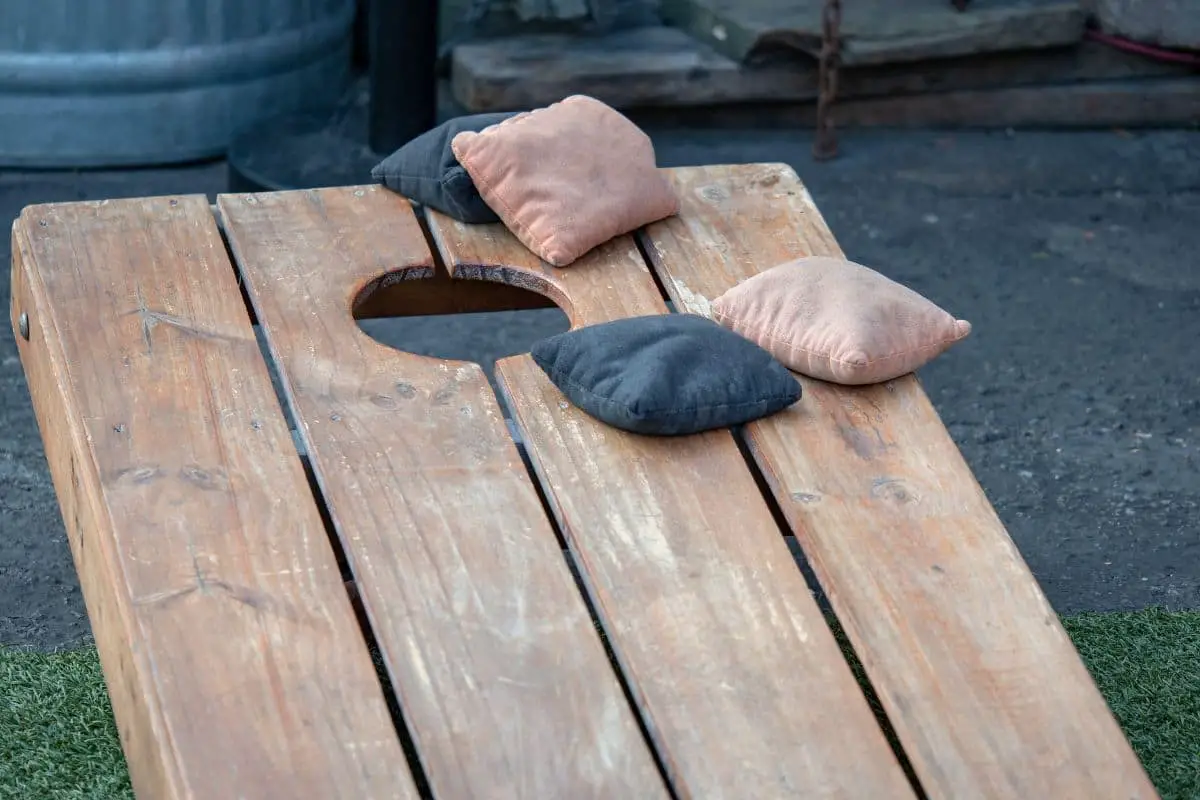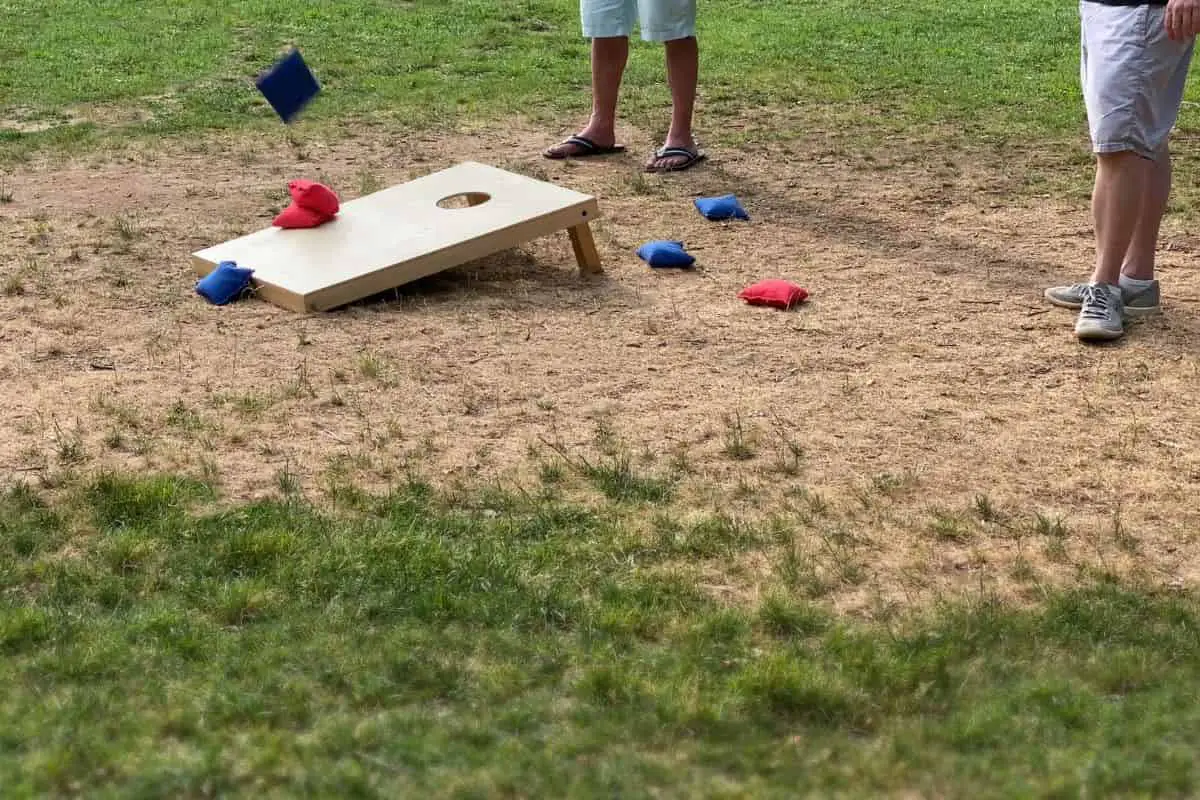Like any sport, volleyball has its fair share of rules to follow. Some of these might seem really complicated and confusing (like what is the difference between front court and back court anyway!), but most of the rules are pretty straight-forward, especially after you’ve played a few games.
Don’t worry, even the most seasoned players get confused about some of the complicated rules. But that’s why there’s referees to make the final call! And, for the ultimate uncertainty, a re-serve will just get called. Kind of like a do-over for the play, so that it’s fair for everyone.
The following is a list of common questions about the basic rules of volleyball for beginners.
What does the playing area look like?
The volleyball court is the playing area and is outlined by the boundary line. Each team has a 9 metre by 9 metre court area to cover, which is separated by a net down the middle.
How many players are there in volleyball?
Each team must have 6 players on the court.
How do you score points in volleyball?
At its most simple, a point is scored in volleyball when either: 1) the ball touches the floor, 2) or a player is called on a touch violation, meaning the player touched the ball incorrectly. But of course, it’s a bit more complicated than that…
When a team hits the ball over the volleyball net, it has to land IN the court on the other side. If it lands OUT, the other team get the point. If it lands on the floor IN the court, the first team gets the point. As you can imagine, IN/OUT calls of where the ball landed can become quite heated!
How are you allowed to touch the ball in volleyball?
Bump, Set, Spike! These are the classic ways you touch a volleyball during the game. But you’re also allowed to block the ball from coming over the net, and you also get to serve the ball over the net as well.
Bumping, or passing, is when you bounce the ball off of your forearms.
Volleying, or setting, is when you contact the ball over your head with your fingers. You have to do this motion in a clean way, or else you will get called for a lift or a double. More on that below…
Spiking, or hitting, is when you swing overhead at the ball and make contact with your hand, hoping to power the volleyball over the net so hard that your opponent won’t be able to hit it back. Sound easy? It is, but the hard part is that it has to land inside the court!
Blocking means jumping straight up at the net to block the ball with both your hands when your opponent is hitting it over to your side.
Every play begins with a serve. A player can choose to serve underhand or overhand and has to hit the ball from the back of their court over the net to the opposing side.
What are the common touch violations?
A double is when a player touches the ball more than once. For example, if a player is trying to volley the ball, the ball has to touch both hands simultaneously. If the timing is off, the ball may hit one hand, then the other, which would be called as a double.
A lift is when the player carries and holds the ball too long instead of contacting it cleaning. This can happen with either a volley or with a bump.
There are some exceptions to these rules, but for the most part, these are the basic violations.
What is “front court” and “back court”?
The playing area for each team is divided into front court and back court by the attack line. There are always 3 players in the front court and 3 players in the back court. The difference just means how a player is allowed to touch the ball.
A front-court player is allowed to make contact with the ball above the height of the net, which means they are able to jump when hitting and blocking.
A back-court player has to stay below the height of the net, so they are mostly playing defense by passing the ball. A back-court player is actually allowed to hit the ball over, as long as they stay below the height of the net.
What does it mean to rotate in volleyball?
Players don’t just play in one spot on the court for the whole game. How boring would that be! They rotate around the court every time a new server starts on their side. A player starts in the serving position, then moves into the front court, across the front court, then back into the back-court.
What happens if my team is called “out of rotation”?
At the start of each game, the 6 players on the court must position themselves in a certain order and maintain that order as they rotate through the game. Being “out of rotation” means that the players are standing in an order that is different than how they started the game.
Is there a maximum number of times that the ball can be touched?
Each team can touch the ball a maximum of 3 times on their own side before the ball has to go over the net to the other team. The exception to this is that a block (when a player jumps and tries to block the hit from the other team) doesn’t count as a touch.
Remember, though, that 3 is the maximum. It’s okay if a team has only one or two touches. The advantage is that you want to have a Bump Set Spike play as often as possible!
Can you kick the ball in volleyball?
A player is allowed to touch the ball with any part of their body (yes, that includes your face!). So, technically, yes, you are allowed to kick the volleyball. However, this move is most often reserved for a digging play when a player has no other option, or for an accidental touch. So try to keep the kicking on the soccer field!
Can the ball touch the net?
Yes, the ball is allowed to touch the net, either during a play or during a serve. As long as the ball contacts the net between the antennas that are mounted on the net to mark the court boundary, the ball is considered to be in play.
Can a player touch the net?
No, a player is not allowed to touch the net during a play. No exceptions.
What is rally point in volleyball?
Rally point simply means that a point is scored on every play. Rally point was introduced in the late 1990s – before that, the side out scoring system was used. That meant that only the team who was serving could score points. The term “side out” was used to indicate when the team lost the serve, and therefore wouldn’t be able to score any points until they “got the serve back”.
The rally point system was introduced so that it would be easier to predict how long a game would take, and to make the game easier to watch. With side out scoring, two evenly matched teams could in theory just alternate between side-outs plays and take forever to actually score any points. Rally point means there is a limited number of plays before the game ends.
How many points do you need to score to win an indoor volleyball game?
25 points.
What is the difference between a volleyball game and a volleyball match?
A game is played to 25 points. A match is made up of a series of games. For example, a volleyball match is usually made up of 5 games to 25 points. However, the number of games in a match depends on the league. In recreational volleyball, a match could be anywhere between 2 to 5 games.
Click here for 16 volleyball tips for beginners
That pretty much covers the most basic rules of volleyball to get you started. As with any sport, there are of course some very complicated rules that even experienced players get confused about. And what is even more confusing is that many of those rules have exceptions to them! But, for the most part, volleyball is a pretty straightforward game: just hit the ball inside the court!
Remember, the more you play, the easier it will be to remember all these rules.
Have fun!






Leave a Reply